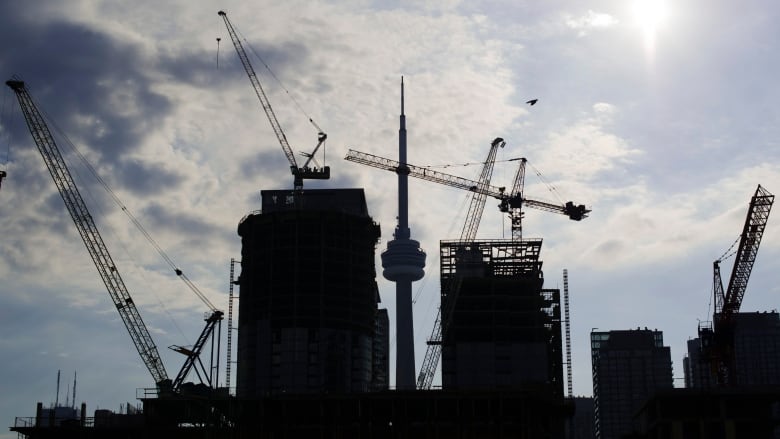Toronto dirt dumped in Hamilton, Flamborough fights back

Each day, large trucks rattle down Flamboroughs roads and dump tons of dirt from Toronto condo projects. And one local politician is fighting back.
Dump trucks are bringing hundreds of loads of fill from GTA developments, said Coun. Robert Pasuta of Ward 14. Sometimes it happens overnight, at 11, 12, 1 oclock in the morning, from deep-pocketed developers paying landowners to take the fill. And local bylaws lack the teeth to make sure it's not contaminated.
The fillis sparking concern among Flamboroughs rural residents, who worry about whats in the it, the impact on sensitive wetlandsand the damage the trucks are doing to the roads, among other concerns. Pasuta hopes to assemble a meeting later this summer to discuss it.
It just drives me absolutely crazy to see these trucks pounding our roads, he said. Particularly in the spring, you see ditches and wetlands filled with this reddish brown coloured runoff.
The issue of what to do with GTA fill from its construction boom is not a new one, and it's one every city and conservation authority is struggling with, said Nathan Murray, a Conservation Halton watershed enforcement officer.
North of Toronto, the township of East Gwillembury has passed a bylaw forbidding fill from outside its borders. The Grand River, Hamilton and Halton conservation authorities are all working on new policies to try to keep toxic fill off local properties. Burlington is working on a new bylaw, Murray said.
'I have a bad habit of following strange trucks'
Its been a growing issue in Flamborough since last summer, Pasuta said. Developers use a middle man a fill broker to contact landowners willing to take the fill in exchange for money or property improvements. Theyre changing the grades of their property, filling small gravel pits, building berms and finding other uses for it.
Pasuta spends much of his time driving the rural roads of his ward, and I have a bad habit of following strange trucks, he said. Residents are also calling him.
If you have time, start counting the trucks at the corner of Highway 6 and Highway 5. Itll blow your mind.- Nathan Murray, Conservation Halton
The FlamboroSpeedway gets as many as 200 truckloads of dirt some days. The speedway is building a berm around the property to curb noise complaints, ownerJohn Casale said.
"Right now, they're complaining about the trucks on the road," he said. "Thats the main problem right now.Nobody likes truck traffic."
The speedway gets money to take the fill, he said. That money goes into building the berm, which started about a year ago. The project means work for local crews who are building it.
Money and jobs at stake
"The truckers make some money. The people that shape it make some money. It keeps them going."
His fill has come from a Burlington construction project, as well as from the new Tim Horton's Field stadium construction in Hamilton, he said.
"I don't think anything came from Toronto."
Last year, the city of Hamilton beefed up its site alteration bylaw, putting greater restrictions on the height and location of berms and the impact they have on sight lines, specialty crops and water drainage, said Tony Sergi, Hamiltons senior director of growth management. It was all aimed at controlling the fill issue. But the bylaw isn't enough, Sergi said.
His department wants to rewrite the bylaw. It will ask for money in the 2015 budget to hire a consultant more familiar with provincial and environmental regulations.
No guarantee it isn't contaminated
The current bylaw carries a penalty of $10,000 for the landowner on first offence for taking fill without permission, he said. For corporations, its $50,000. But developers working on multi-million-dollar projects may see covering it as a cost of doing business.
The Ministry of Environment has a set of guidelines dictating soil conditions. But there are no firm methods in place to make sure developers follow them, Murray said.
In Hamilton, permits to accept fill are issued by the city or the applicable conservation authority, depending on the property, he said. Neither Conservation Halton nor other local conservation authorities have policies specifically stating that the soil can't be contaminated. And with the high cost of remediating soil, there's financial incentive for developers to try to sneak truckloads of contaminated fill in with the clean ones.
As for the Ministry of Environment, it relies on complaints from neighbours to detect problem areas, spokesperson Jennifer Hall said.
Fill is a $1-billion business in Ontario, Murray said, and he knows of some fill brokers who make $20,000 a week. It's such big money that they know every municipal bylaw, and "whichever area has the weaker bylaw, that's where the fill goes." Hamilton's has a weak spot an exemption for properties larger than an eighth of a hectare that's likely making it attractive to fill brokers.
As for revising that, "any time youre strengthening a piece of legislation that carries a loophole in it is not a bad thing," he said.
"If you have time, start counting (the trucks full of fill)at the corner of Highway 6 and Highway 5. Itll blow your mind."












_(720p).jpg)


 OFFICIAL HD MUSIC VIDEO.jpg)
.jpg)



























































































